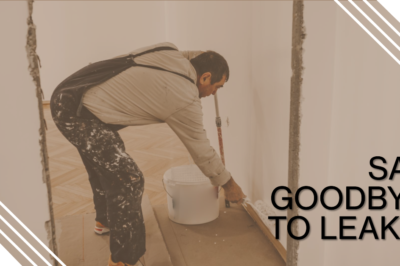Bathroom waterproofing
Bathroom – it’s a permanent source of moisture in the house, a destructive effect which can last for years or manifest itself in the most trivial way in the form of flooding of neighbours. So bathroom waterproofing is necessary.
As a rule, line surfaces in premises exposed to water during operation (moisture load) with ceramic or other tiles. These claddings are moisture-resistant and water-repellent. However, the seams between the element’s facings can remain permeable.
Moisture through seams can penetrate the base, causing long-term damage (moisture saturation and damage to the floor, discolouration of joints, mould and mildew, cracking of grout in joints, and peeling of tiles).
In this case, a waterproofing device is necessary before tiling to the base layer of additional waterproofing. Waterproofing protects the surfaces of foundations, joints of building structures (wall-to-wall, wall-to-floor), and places where communications pass from moisture penetration.
Advantages
- prevents danger of emergency leakage;
- protects walls from destruction due to moisture;
- prevents the appearance and reproduction of harmful to health person microorganisms.
Over the entire surface of the floor, on the lower part of the walls to a height of at least 20 cm from the floor surface, on the whole surface of the walls in shower stalls with an entry of at least 50 cm beyond them, in areas of the walls behind sinks and bathtubs to a height of at least 20 cm above the water source (faucet or highest position shower heads) and at least 50 cm away from the edges of bathtubs and sinks.
It may turn out that installing waterproofing throughout the entire bathroom is simpler and easier than in individual areas.
Waterproofing of floors and walls in the bathroom
In places where the floor adjoins walls, foundations for equipment, pipelines and other structures protruding above the floor, waterproofing must be provided continuously to a height of at least 20 cm from the level of the floor covering, and if a stream of water can hit the walls – to the entire size of soaking.
With an average intensity of exposure to sewage and other liquids on the floor, the number of waterproofing layers is taken based on the type of material:
- waterproofing from bitumen roll materials glued to mastics, bitumen and bitumen-polymer mastics and cement-based waterproofing solutions – in at least two layers;
- waterproofing from bitumen roll fused and self-adhesive and polymer roll materials – at least one layer.
Roll waterproofing
Attach roll and film materials to the room’s walls is very inconvenient and quite difficult; that’s why they are using mainly for waterproofing the floor.
The main difficulty is that such waterproofing Ceramic tiles and other finishing materials cannot be laid immediately. First, you need to make a cement-sand screed. Moreover, cement the solution does not form good adhesion to the surface of the bituminous material or polymer film but simply lies on the waterproofing layer. According to SNiP, the thickness of the floating screed should be at least 4 cm; otherwise, the cement slab will not have the required strength characteristics and will not withstand the mass bathtub, washing machine, toilet, etc., creating significant loads.
Also Read: Elevate Your Living: Premier Home Improvement Services in Brooklyn
Coating waterproofing
Coating waterproofing is easier and faster than roll materials, especially in confined spaces such as bathrooms and toilets.
An easy-to-use material is liquid bitumen-latex mastic (water-emulsion bitumen mastic). Mastics form better adhesion to the base than roll material. However, cement tile adhesive does not include a reliable bonding to bitumen, so tiles will also require a screed device during subsequent laying.
Cement-based waterproofing is the most suitable material for bathroom waterproofing work in the apartment. Cement mortar or tile adhesive will be held on the cement-polymer mass, much better than roofing felt or film. Generally, the thickness of the floor will be less since it does not have additional cement screed protecting the rolled waterproofing. At the same time, with this composition, you can even out small surface unevenness, for example, if it is applied to high-quality unplastered walls made of cellular concrete, sand-lime brick or plaster without grouting. Choosing the right waterproofing services Melbourne is crucial to ensure the quality and durability of your repairs.
Bathroom waterproofing device
- cleaning the interior surface of the toilet;
- levelling the surface using repair mixtures;
- applying a layer of waterproofing, cement, and polymer-cement waterproofing materials is the most appropriate;
